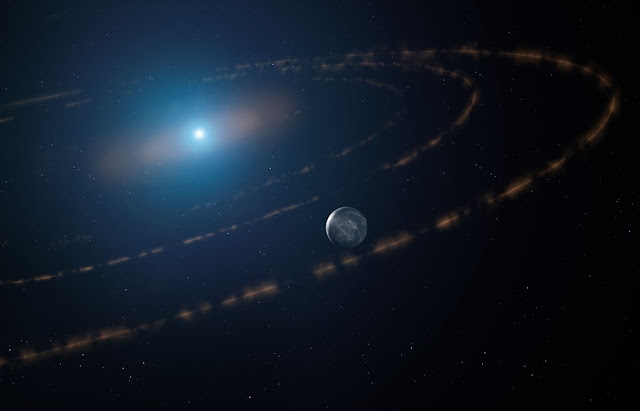It turns out that the existence of life on planets orbiting stars like our sun does not require those stars to be vibrant and powerful. A potential “major planet” that orbits a dying sun and could support life in the future has been found by scientists.
The “surprising” discovery was made by researchers from University College London while watching a white dwarf, the burning remnants of a star that ran out of hydrogen fuel. It is about 117 light-years away from us. This star, known as WD1054-226, has a ring of planetary rubble in its orbital habitable zone, also known as the Goldilocks zone, where temperatures should enable the planet to have liquid water on its surface.

If the newfound planet is proved to be a life-sustaining world, it will be the first time a life-sustaining planet has been identified around a dying sun.
Scientists made the discovery while monitoring the light from the white dwarf and reported their results in the Royal Astronomical Society’s Monthly Notices. They discovered strong dips in light that matched to 65 uniformly distributed clouds of debris that orbited WD1054-226 every 25 hours, according to their findings.
Jay Farihi, the lead author of the study and professor at UCL Physics and Astronomy, said: “The moon-sized structures we have observed are irregular and dusty (e.g. comet-like) rather than solid, spherical bodies”
He described the structures as a “mystery we cannot explain,” but suggested one possible and “unexpected” explanation: a nearby planet.
He said: “”An exciting possibility is that these bodies are kept in such an evenly-spaced orbital pattern because of the gravitational influence of a nearby planet. Without this influence, friction and collisions would cause the structures to disperse, losing the precise regularity that is observed. A precedent for this ‘shepherding’ is the way the gravitational pull of moons around Neptune and Saturn help to create stable ring structures orbiting these planets. We were not looking for this.”
The idea of a “major planet” in the star’s habitable zone is thrilling, but he emphasises that such a planet has yet to be proven. Farihi stated that his team still requires further proof, which may be tough to get due to the inability to directly view the planet. To gain a clearer explanation, they may have to depend on computer models along with additional observations of the star and its circling debris.

The team anticipates that, if a planet exists, it was just recently formed — and that it would be habitable for at least 2 billion years, including at least 1 billion years in the future.
Their finding may also aid scientists in developing a better knowledge of our solar system, as more than 95% of all stars, including our sun, will ultimately become white dwarfs.
Updated version of the previous article.





